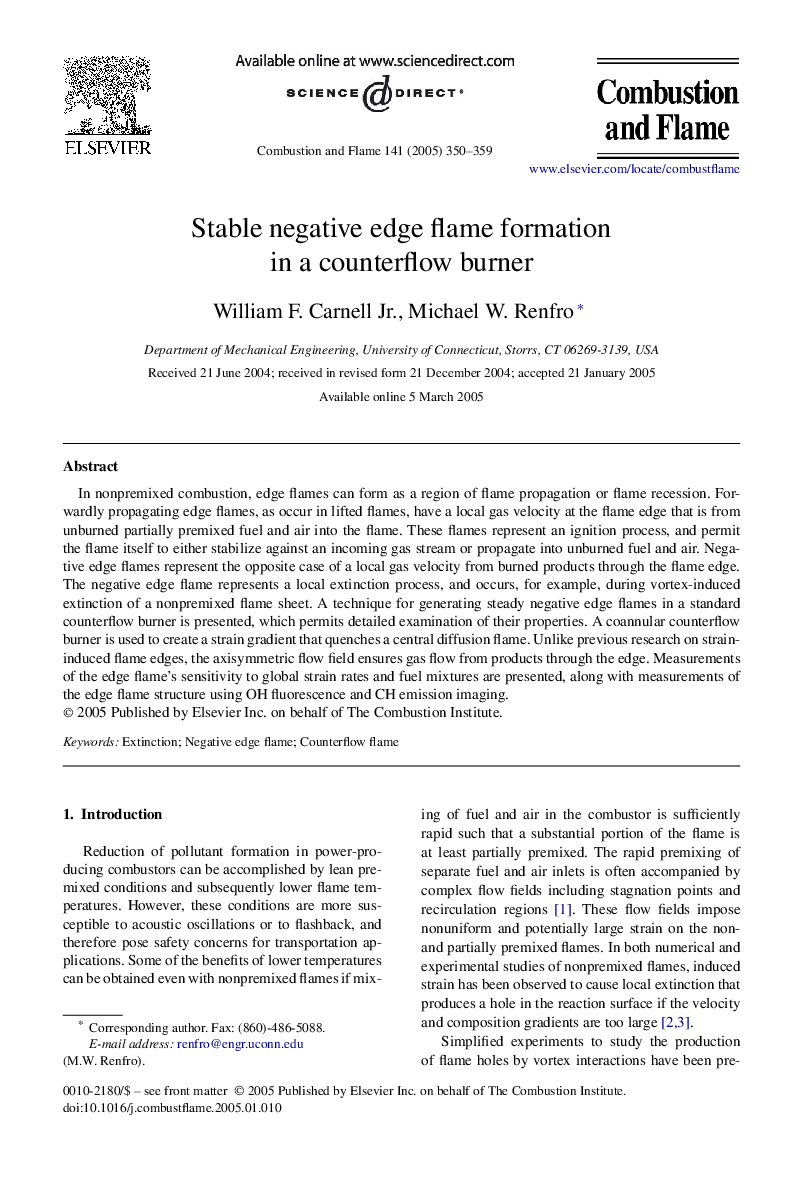| Article ID | Journal | Published Year | Pages | File Type |
|---|---|---|---|---|
| 10264458 | Combustion and Flame | 2005 | 10 Pages |
Abstract
In nonpremixed combustion, edge flames can form as a region of flame propagation or flame recession. Forwardly propagating edge flames, as occur in lifted flames, have a local gas velocity at the flame edge that is from unburned partially premixed fuel and air into the flame. These flames represent an ignition process, and permit the flame itself to either stabilize against an incoming gas stream or propagate into unburned fuel and air. Negative edge flames represent the opposite case of a local gas velocity from burned products through the flame edge. The negative edge flame represents a local extinction process, and occurs, for example, during vortex-induced extinction of a nonpremixed flame sheet. A technique for generating steady negative edge flames in a standard counterflow burner is presented, which permits detailed examination of their properties. A coannular counterflow burner is used to create a strain gradient that quenches a central diffusion flame. Unlike previous research on strain-induced flame edges, the axisymmetric flow field ensures gas flow from products through the edge. Measurements of the edge flame's sensitivity to global strain rates and fuel mixtures are presented, along with measurements of the edge flame structure using OH fluorescence and CH emission imaging.
Keywords
Related Topics
Physical Sciences and Engineering
Chemical Engineering
Chemical Engineering (General)
Authors
William F. Jr., Michael W. Renfro,
